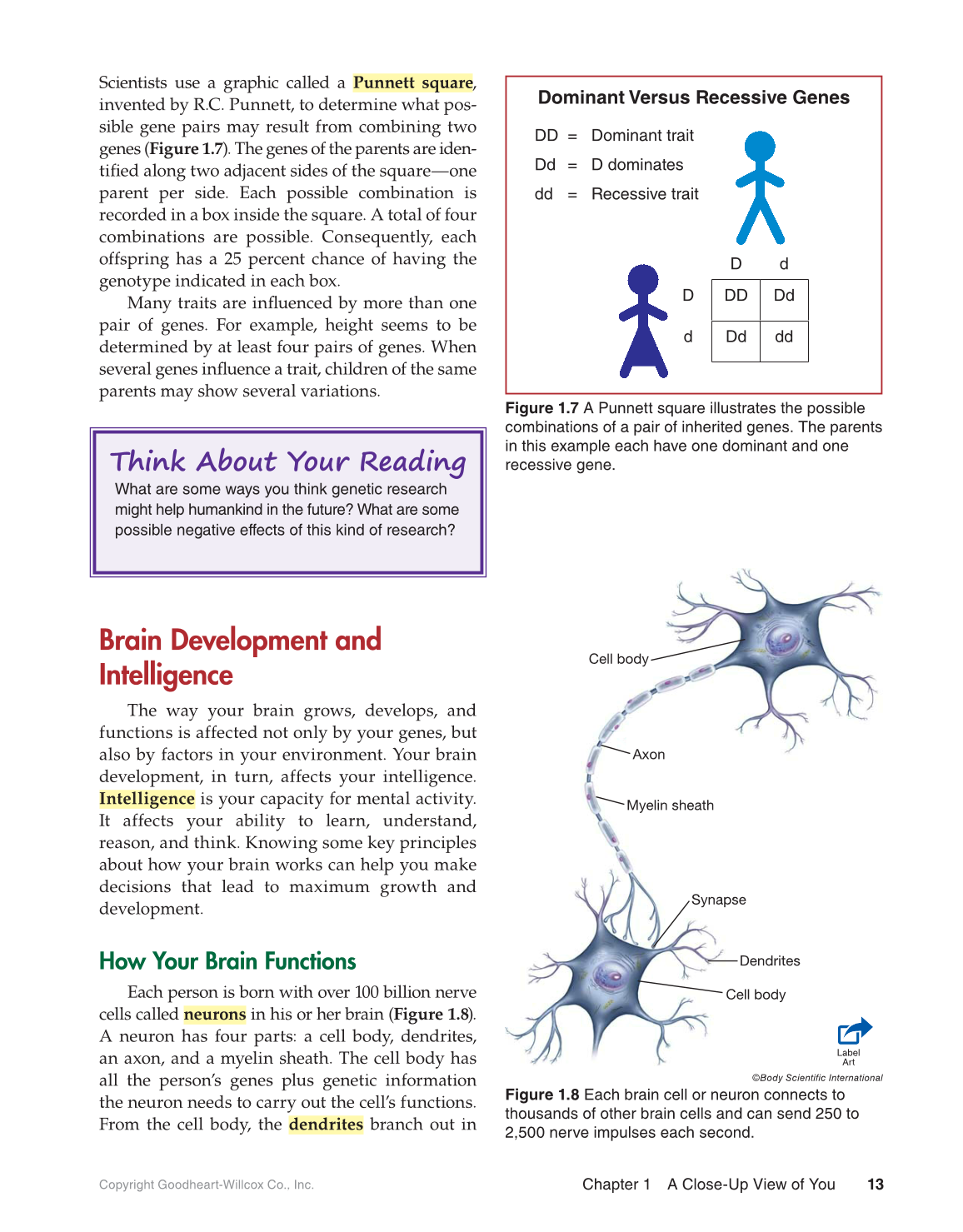Chapter 1 A Close-Up View of You 13
Scientists use a graphic called a Punnett square,
invented by R.C. Punnett, to determine what pos-
sible gene pairs may result from combining two
genes (Figure 1.7). The genes of the parents are iden-
tifi ed along two adjacent sides of the square—one
parent per side. Each possible combination is
recorded in a box inside the square. A total of four
combinations are possible. Consequently, each
offspring has a 25 percent chance of having the
genotype indicated in each box.
Many traits are infl uenced by more than one
pair of genes. For example, height seems to be
determined by at least four pairs of genes. When
several genes infl uence a trait, children of the same
parents may show several variations.
Brain Development and
Intelligence
The way your brain grows, develops, and
functions is affected not only by your genes, but
also by factors in your environment. Your brain
development, in turn, affects your intelligence.
Intelligence is your capacity for mental activity.
It affects your ability to learn, understand,
reason, and think. Knowing some key principles
about how your brain works can help you make
decisions that lead to maximum growth and
development.
How Your Brain Functions
Each person is born with over 100 billion nerve
cells called neurons in his or her brain (Figure 1.8).
A neuron has four parts: a cell body, dendrites,
an axon, and a myelin sheath. The cell body has
all the person’s genes plus genetic information
the neuron needs to carry out the cell’s functions.
From the cell body, the dendrites branch out in
What are some ways you think genetic research
might help humankind in the future? What are some
possible negative effects of this kind of research?
Figure 1.7 A Punnett square illustrates the possible
combinations of a pair of inherited genes. The parents
in this example each have one dominant and one
recessive gene.
Dominant Versus Recessive Genes
DD = Dominant trait
Dd = D dominates
dd = Recessive trait
D d
D DD Dd
d Dd dd
Synapse
Dendrites
Cell body
Axon
Myelin sheath
Cell body
©Body Scientific International
Figure 1.8 Each brain cell or neuron connects to
thousands of other brain cells and can send 250 to
2,500 nerve impulses each second.
Label
Art
Copyright Goodheart-Willcox Co., Inc.
